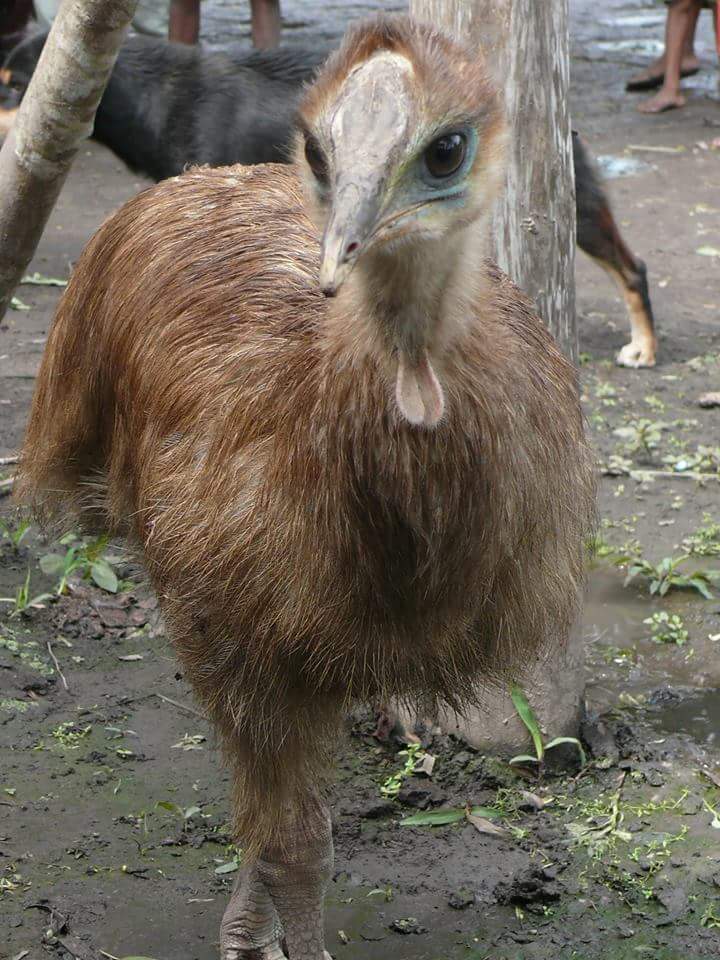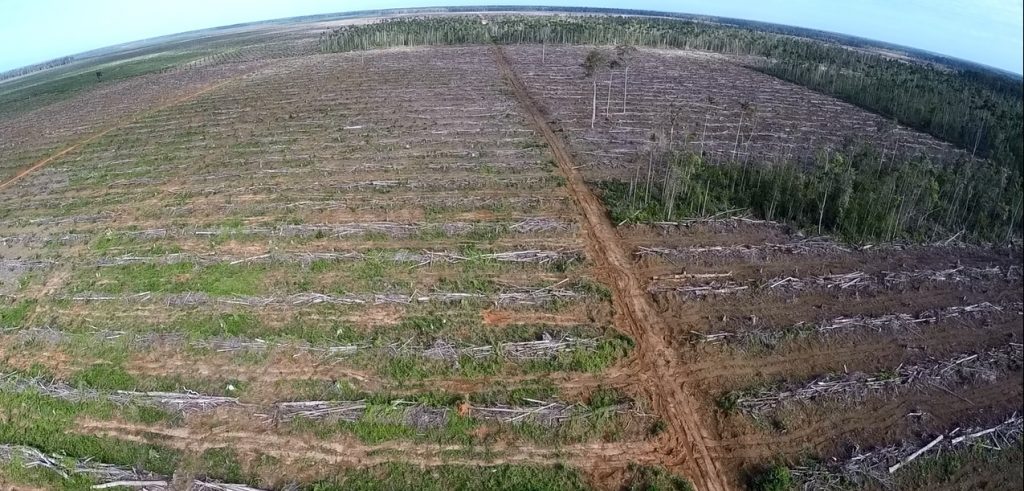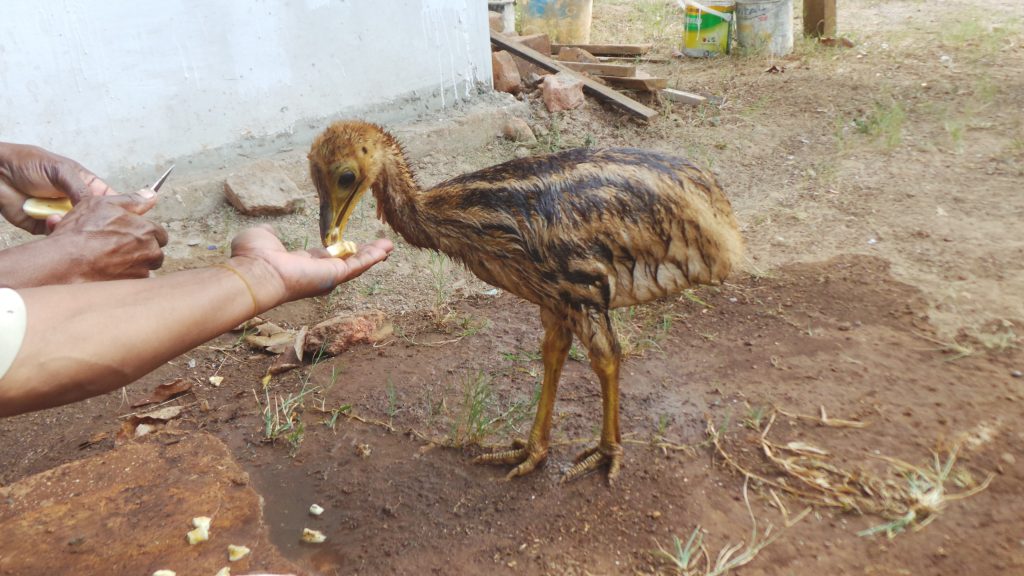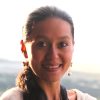In Deforestation’s Wake, Wild Animals Turn Troublesome

The West Papuan village of Khalaoyam is home to a cassowary chick that was rescued by community members when it was still an egg. [1] [1] Pseudonyms for people and places have been used throughout at the request of the individuals cited. A group of women found the remnant of its nest, with three eggs inside, in a newly dug irrigation ditch amid the smoldering remains of a forest that had been leveled and burned to make way for an 18,000-hectare oil palm plantation. The women noticed the nest when they were returning from an unsuccessful fishing trip to the Bian River, one of the area’s largest rivers. There, a slurry of toxic sludge, discharged by the local oil palm mill, had contaminated the water and killed scores of fish, leaving their poisoned bodies floating on the surface.
The women carefully carried the three eggs back to the village and incubated them in a large vat of rice. Although two of the eggs rotted away, one held on. Seven weeks later, a tiny, scraggly chick squirmed its way out of the pale blue-green shell. The villagers named the male cassowary chick Ruben.
Ruben roamed the village, his fragile whistle wafting in the midafternoon air as a melodic backdrop to the villagers’ conversations. Community members fed him raw rice, biscuits, and instant noodles. They created a resting place for him in the backyard of the local church, where the priest also kept doves and chickens. Ruben, gangly on his skinny legs, towered over his shorter and stouter avian yardmates. (Cassowaries are large flightless birds; when Ruben is full-grown he could reach nearly 6 feet tall.) He was a shy creature, with brown and cream striped plumage, a tiny beige wattle that always seemed something of a nuisance, and a barely noticeable casque under the tufts of light feathers crowning his angular head.
Every so often, community members would coax Ruben to the edge of the forest, hoping he would choose to return to the wild—back to his kin and home. But he always retreated to the safety of the chicken yard or crouched behind the stone well, his feathers ruffled, his meager frame trembling slightly. He seemed rather sweet in his gawkiness, and I would spend an hour a day happily feeding him leftovers.
One evening, I was sitting with a group of men and women after a hearty meal of papeda, a thick opaque jelly of sago palm pith boiled in water and mixed with fish soup, turmeric, and lime. Everyone was relaxed, smoking clove cigarettes and talking. Then, during a momentary lull in the conversation, Ruben’s shy whistle echoed through the night. I smiled and commented on how sweet his song was, and how lucky we were to have such a cute pet among us. I glanced around at my friends and, to my surprise, faces that only an instant ago had been happy and smiling were now somber.
What, I wondered, had I said?
Elena, an old woman employed by the priest to tend the chickens and doves, raised her head and sighed deeply, her eyes moist. “This is no song, child,” she said. “This is a weeping. This is the cry of the cassowary. Can you not hear the sadness, child? Does it not rip through your heart with the speed of a nipa arrow? We hear only a weeping, a lament. We feel the grief of the cassowary as it seeps through our skin and bones. We hear death and mourning in its call. No longer wild or free, the cassowary has become plastic.”
Then Elena’s husband, Marcus, began to sing a fragmented song:
Without a father, you were born/ Without a forest, you were found/ Whither your kinsmen, whither your home?/ Today you are an orphan/ For food you beg, for water you beg/ When will you roam the forest free again?/ Wild you were, strong you were/ Now you eat rice and instant noodles/ You take baths and know the ring tones of mobile phones/ Ruben the modern cassowary, your cry fills my old bones with grief.
Khalaoyam is a remote village in the Merauke region of West Papua, in easternmost Indonesia. Located along the banks of the upper Bian River, the village is surrounded by a vast landscape of forest, savannah, and swamplands. The upper Bian River area is home to the Indigenous Marind, who to this day depend on the forest for much of their subsistence. In the past 10 years, rampant deforestation to make way for industrial and agricultural operations—largely monocrop oil palm plantations—has led to dramatic biodiversity loss and adverse social and economic impacts on the Marind. The resulting backlash has inspired a grassroots land-rights and advocacy movement that has sought to raise awareness among the Indonesian government and the United Nations about the negative impacts of these operations.
Spurred by the growing global and national demand for food and fuel, this large-scale landscape transformation is part of a broader development scheme called the Merauke Integrated Food and Energy Estate project, which involves the conversion of up to 2.5 million hectares of forest to oil palm, sugarcane, mining, and timber concessions across the region. The effort is just the latest in West Papua’s long history of top-down natural resource exploitation. Accurate data on the rates of deforestation in West Papua remain largely elusive, but according to Greenpeace Indonesia, logging (both legal and illegal) and agribusiness plantations are the main drivers of deforestation in the region. Oil palm plantations are expanding at a particularly rapid rate.
Forest animals and plants play a central role in Marind cosmology, and many of them—like Ruben—are considered conscious persons, with their own personalities and capacities. The forest is teeming with such nonhuman persons and ancestral spirits—cassowaries, wild boars, deer, sago palms—with whom the Marind share kinship, history, and mythical origins. Humans are not distinct from or superior to nature but rather one of many participants in a multispecies world in which the relations between species are what give meaning and morality to peoples’ lives and actions.
For the Marind, the loss of the forest and its many beings thus represents much more than an environmental problem. It radically challenges the possibility of sustaining valued human–nonhuman connections, and gives rise to new kinds of ambiguous interspecies relationships. One of these is pet-hood.
Marcus tells me that the Marind never used to keep pets—in fact, he says, there is no word for “pet” in the Marind language. The practice started only after the industrialization of the forest began, when wild animals—fleeing the fires and faced with starvation—were forced to approach human settlements, looking for food. In Khalaoyam, there is Ruben. In neighboring villages, I came across a pair of New Guinea crocodiles confined in an unused outdoor water trough, a lame rusa deer tied to the foot of a large mango tree, and a bright-eyed spotted cuscus (a tree-dwelling marsupial) housed in a makeshift cage hanging precariously from a gnarled jackfruit tree.
But much to my surprise, these once-wild animals are not cherished as companions—cared for and loved unconditionally by their owners—as pets are in Western societies. Neither are they considered sources of amusement or emotional bonding. Instead, for the Marind, pets are a source of great sadness and pity. They are referred to as “orphans of the forest” who, when they begin to eat human foods and live around people, lose the uniqueness of their species and become “modern” in complicated ways.
My comment on Ruben’s “sweet” song was perplexing to my Marind friends because, to them, there is nothing cute or adorable about a bird that has lost its wildness and is completely dependent on human beings—no longer able to survive on its own. Villagers would often say that Ruben is no longer “native” to Marind soil, no longer a “true” cassowary. Instead, he’s turned into a “foreigner,” an alien “settler,” neither fully cassowary nor human, but somewhere strangely in between.
Pets are also a source of confusion and unease for the Marind who tend to them. On the one hand, as vulnerable refugees, these animals require human help to survive. To leave them in the forest would be to kill them, since they can no longer fare on their own—a morally reprehensible act to the Marind, given the ancestral and kinship ties that connect them to these forest beings. On the other hand, taming animals deprives them of their freedom, and makes powerful ancestral spirits problematically dependent on their human descendants. Pets, as such, offer few comforts, but many conundrums.
The reasons people keep pets remain subject to debate across evolutionary, behavioral, psychological, and anthropological fields. For most people, pets suggest relationships based on mutual affection and companionship. Sadness or compassion is expressed primarily when animals are abused or abandoned.
But the problematic pets in the upper Bian River area challenge assumptions about the emotional attachments and companionship that motivate pet culture in Western societies. Pets are not universally cherished or wanted; the Marind in fact see themselves as forced into becoming their keepers. For them, pets are deeply troublesome, because they challenge valued forms of human–nonhuman relationships. In this view, pet-hood is a source of sorrow for both the cared-for and the caregiver.
Another frequently noted dimension of relationships with pets is the tendency for owners to project human traits onto their pets in terms of their behavior, personality, and even appearance. But what seems to be happening in the upper Bian River area is the opposite: People reflect on the plight of these forest refugees and see elements of their own transformed human condition.
For instance, Ruben’s taming is often compared to the forcible taming of the wild forest to make way for human-manipulated and managed oil palm plantations. In the context of the politically controversial history of West Papua, where egregious human- and civil-rights abuses continue to proliferate, pets are also highly troubling as embodiments of political oppression. Their loss of freedom mirrors the lack of autonomy that Indigenous Papuans have experienced as a result of policies imposed by a paternalistic Indonesian state.
In the sweltering heat of the midafternoon sun, Ruben shakes off the last drops of his daily bath. A little boy sits beside him, slurping down a bowl of instant noodles, and occasionally throwing some to Ruben, who, in trying to pull the noodles apart, ends up getting his bony feet caught in their tumbled strands.
Old Barnabus, a village elder, smiles sadly as he watches Ruben struggling to extricate himself from the sticky mess. “Look at this poor bird,” he says. “He was born in rice, lives off rice, the first modern cassowary that ever walked Marind soil. Who knows, someday he might teach me how to use this mobile phone I was given by the oil palm companies!”
For that, Barnabus will have to be patient. Despite all the development, and the welfare benefits promised by the oil palm corporations to the communities in exchange for their land, cellphone service has yet to reach the village of Khalaoyam.




































